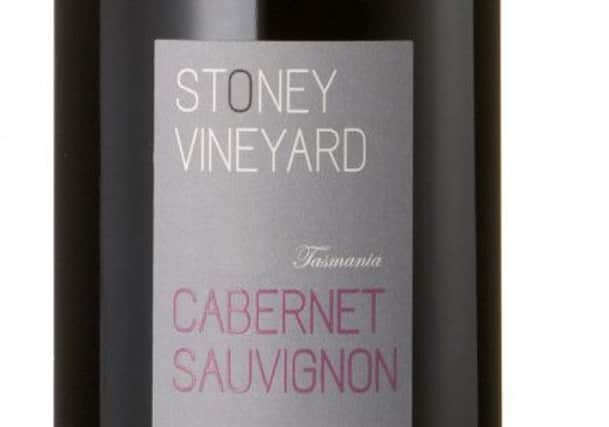5 top Tasmanian wines to try


Known as the Apple Isle, Tasmania supplies the world with Braeburns and Granny Smiths, but its cool maritime climate has also attracted prospective winemakers. However, only small family wineries have braved the chilly westerlies here. But as temperatures edge up in mainland Australia with harvests earlier and droughts increasing, there are fears that parts of Hunter or Victoria may become too hot, dry and expensive for vines in 30 years. Some of the big guns have decided to set their sights on this southerly outpost.
Until recently the big Aussie companies like Domaine Chandon and Hardy’s have plundered Tasmania to add acidic zip to their fizz, shipping juice and base wine 150 miles across the Bass Strait to the mainland to add to their blends. Yalumba has owned vineyards here for its popular Jansz fizz brand using Tasmanian grapes, made in Victoria.
Advertisement
Hide AdAdvertisement
Hide AdNow big names are snapping up estates, taking advantage of relatively cheap land prices in cool, windy, Tasmania reputedly paying a tenth of New Zealand land prices. Brown Brothers has bought Kayena, the Hill Smiths, owners of Yalumba, now has three estates here including new purchases, Frogmore Creek and Dalrymple. Significantly, Brown Brothers has sold its 116 hectare White Hills winery to the huge Treasury Estates which make Penfolds Grange, which will certainly put Tasmania on the wine map.
Popular fizz grapes chardonnay and pinot noir are being joined by aromatic varietals for still wine like riesling, pinot gris, gewurztraminer and sauvignon blanc. Experimentation in cooler northwest Devonport, previously considered too cool and wet, indicates the move to fresher spots.
Pinot noir is the most planted red grape (35 per cent of plantings) making a lighter, less alcoholic style than mainland Aussie pinots, but pioneers are experimenting with warm climate red grapes like shiraz and cabernet sauvignon in sheltered easterly Tamar Valley and Coal River.
This must all be music to the ears of one man, Dr Andrew Pirie. An academic with a mission, he singlehandedly revived Tasmania’s wine industry – setting up Pipers Brook winery in 1973. I remember first meeting him in the late 1980s and was struck by this determined, energetic, passionate young man who had so much belief in this quaint island.
Pirie now works for the largest winery, Tamar Ridge, and attracts international investors to the island. He has just returned from Champagne hoping to convince the Champenois that Tasmania is a good place to invest for fizz: currently 40 per cent of the island’s grape production is used for sparkling.
Vines on Tasmania are nothing new. First planted in 1821 in New Town in capital Hobart’s suburb, in 1848 a Tasmanian white won a prize at the Paris Exhibition – but vineyards all but disappeared here until the 1950s. Today there are 1,600 hectares, less than 1 per cent of Australia’s vineyard area. Of 260 vineyards, only 28 producers own more than 10 hectares, so production is small with yields restricted by coastal winds. As everything is done by hand, wine prices are high.
Another pioneer, wealthy Swiss investor Peter Althaus, was considered to be crazy by the wine world when he declared that he was going to grow cabernet in southern Tasmania, in Coal River in 1989. He had searched the world for the right spot, declared no interest in New Zealand’s fashionable Central Otago and settled on a tiny 11 hectare vineyard north east of Hobart, which he says has the largest number of sunshine hours in Australia. I was astounded when I tasted his wines, as they were much lusher and riper than I was expecting. Now admired for his foresight, his Domaine A wines are the most expensive on the island: his cabernet declared by experts as one of Australia’s best.
Once considered a rank outsider only useful for its orchards, Tasmania has most to gain from increasing temperatures – but according to Pirie, the warming will be slower in Tasmania as it is cooled by prevailing westerlies.
Tasmania taste test
Sparkling
JANSZ NV
(£13.95, Lockett Bros, N Berwick; www.winedirect.co.uk)
Advertisement
Hide AdAdvertisement
Hide AdArguably Australia’s best fizz; delicious, biscuit, yeasty character and balanced creamy fruits made from 53 per cent chardonnay and 47 per cent pinot noir blend. Jansz rosé and vintage 2007 fizz are good too.
White
THE SOCIETY’S TASMANIAN CHARDONNAY 2011
(£14.95, www.thewinesociety.com)
I have tasted the 2011 vintage of this wine made by Freycinet, but TWS has sold out and moved on to 2012. The last vintage was so crisply elegant with citric, steely palate – more elegant than many Australian chardonnays.
Sweet
KAYENA VINEYARD TAMAR RIDGE BOTRYTIS RIESLING
(£13.99, hf bt, Waitrose)
Enchanting and fresh with honeyed roundness and vibrant acidity. Made with naturally nobly rotted grapes: only 9 per cent alcohol
Red
DEVIL’S CORNER PINOT NOIR 2009
One of the more accessibly priced Tasmanian pinots, it has a ripe roundness with a cool central core which makes it seem weightless.
STONEY VINEYARD PINOT NOIR 2010
(£25.99, Drinkmonger, Edinburgh and Pitlochry; Cork & Cask, Edinburgh; Lockett Bros)
The second tier of Althaus’ wines, named after the vineyard he first bought. Beautifully made, soft, light and good length: shows what potential Tasmania has for pretty pinot noir.
STONEY VINEYARD CABERNET SAUVIGNON 2007
(£29.99, Drinkmonger; Cork & Cask; Lockett Bros)
Don’t expect this to be like your favourite Classed growth claret or an Aussie Coonawarra cabernet either. This is an extraordinary cabernet. Pricey, but fascinating to taste in its ripeness and elegance.
DOMAINE A CABERNET SAUVIGNON 2006
(£98, Alliance Wine, www.alliancewine.co.uk)
Advertisement
Hide AdAdvertisement
Hide AdGulp! I was as astounded when I tasted Peter Althaus wines as you will be by their price. So ripe and mellow – benefitting from Domaine A’s policy of maturing wines in the bottle themselves before release. He blends in a little cabernet franc and petit verdot too, Bordeaux-style: very concentrated, deep blend.
Join Rose’s Island Wine Tasting at 28 Queen Street, Edinburgh, Wednesday 18 September, £35, [email protected]